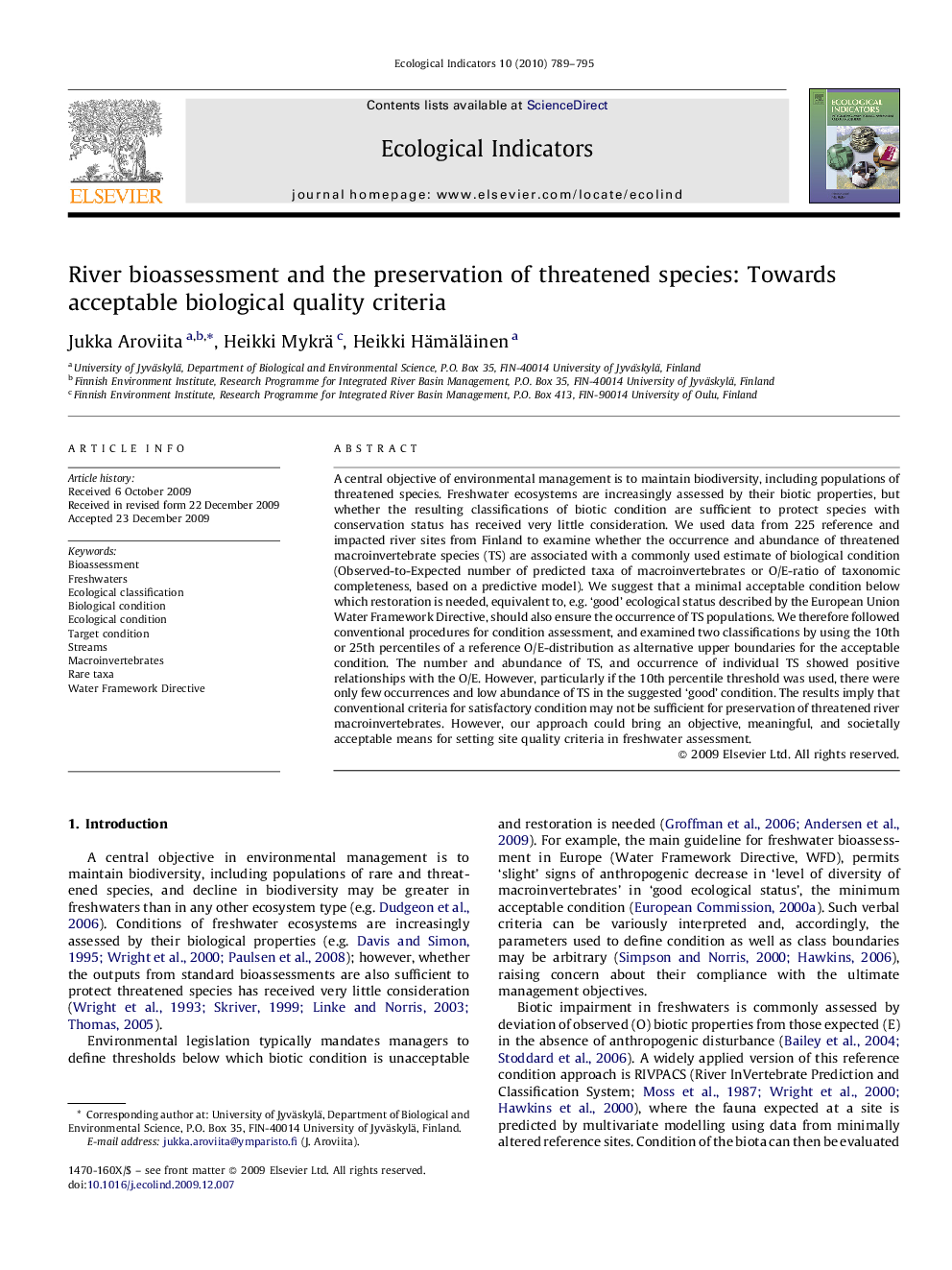| Article ID | Journal | Published Year | Pages | File Type |
|---|---|---|---|---|
| 4374226 | Ecological Indicators | 2010 | 7 Pages |
Abstract
A central objective of environmental management is to maintain biodiversity, including populations of threatened species. Freshwater ecosystems are increasingly assessed by their biotic properties, but whether the resulting classifications of biotic condition are sufficient to protect species with conservation status has received very little consideration. We used data from 225 reference and impacted river sites from Finland to examine whether the occurrence and abundance of threatened macroinvertebrate species (TS) are associated with a commonly used estimate of biological condition (Observed-to-Expected number of predicted taxa of macroinvertebrates or O/E-ratio of taxonomic completeness, based on a predictive model). We suggest that a minimal acceptable condition below which restoration is needed, equivalent to, e.g. 'good' ecological status described by the European Union Water Framework Directive, should also ensure the occurrence of TS populations. We therefore followed conventional procedures for condition assessment, and examined two classifications by using the 10th or 25th percentiles of a reference O/E-distribution as alternative upper boundaries for the acceptable condition. The number and abundance of TS, and occurrence of individual TS showed positive relationships with the O/E. However, particularly if the 10th percentile threshold was used, there were only few occurrences and low abundance of TS in the suggested 'good' condition. The results imply that conventional criteria for satisfactory condition may not be sufficient for preservation of threatened river macroinvertebrates. However, our approach could bring an objective, meaningful, and societally acceptable means for setting site quality criteria in freshwater assessment.
Keywords
Related Topics
Life Sciences
Agricultural and Biological Sciences
Ecology, Evolution, Behavior and Systematics
Authors
Jukka Aroviita, Heikki Mykrä, Heikki Hämäläinen,
